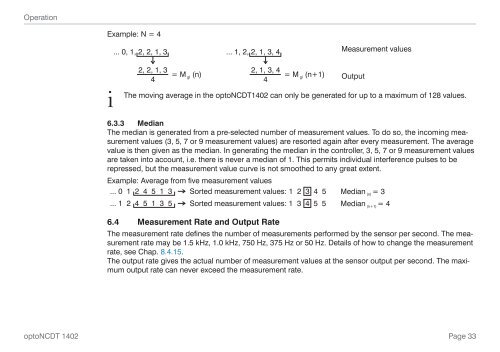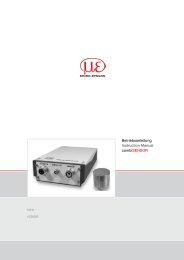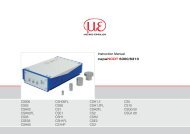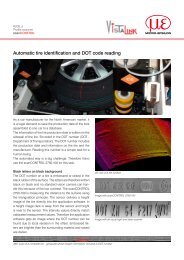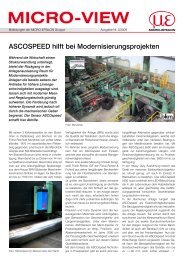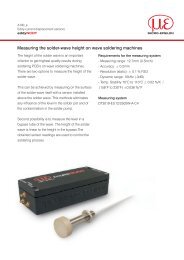Manual optoNCDT 1402 - Micro-Epsilon
Manual optoNCDT 1402 - Micro-Epsilon
Manual optoNCDT 1402 - Micro-Epsilon
You also want an ePaper? Increase the reach of your titles
YUMPU automatically turns print PDFs into web optimized ePapers that Google loves.
OperationExample: N = 4... 0, 1, 2, 2, 1, 3... 1, 2, 2, 1, 3, 4Measurement valuesi2, 2, 1, 34= M (n)gl2, 1, 3, 44= M (n+1)glOutputThe moving average in the <strong>optoNCDT</strong><strong>1402</strong> can only be generated for up to a maximum of 128 values.6.3.3 MedianThe median is generated from a pre-selected number of measurement values. To do so, the incoming measurementvalues (3, 5, 7 or 9 measurement values) are resorted again after every measurement. The averagevalue is then given as the median. In generating the median in the controller, 3, 5, 7 or 9 measurement valuesare taken into account, i.e. there is never a median of 1. This permits individual interference pulses to berepressed, but the measurement value curve is not smoothed to any great extent.Example: Average from five measurement values... 0 1 2 4 5 1 3 Sorted measurement values: 1 2 3 4 5 Median(n)= 3... 1 2 4 5 1 3 5Sorted measurement values: 1 3 4 5 56.4 Measurement Rate and Output RateMedian = 4(n+1)The measurement rate defines the number of measurements performed by the sensor per second. The measurementrate may be 1.5 kHz, 1.0 kHz, 750 Hz, 375 Hz or 50 Hz. Details of how to change the measurementrate, see Chap. 8.4.15.The output rate gives the actual number of measurement values at the sensor output per second. The maximumoutput rate can never exceed the measurement rate.<strong>optoNCDT</strong> <strong>1402</strong>Page 33


